The Mighty "T" in Morocco
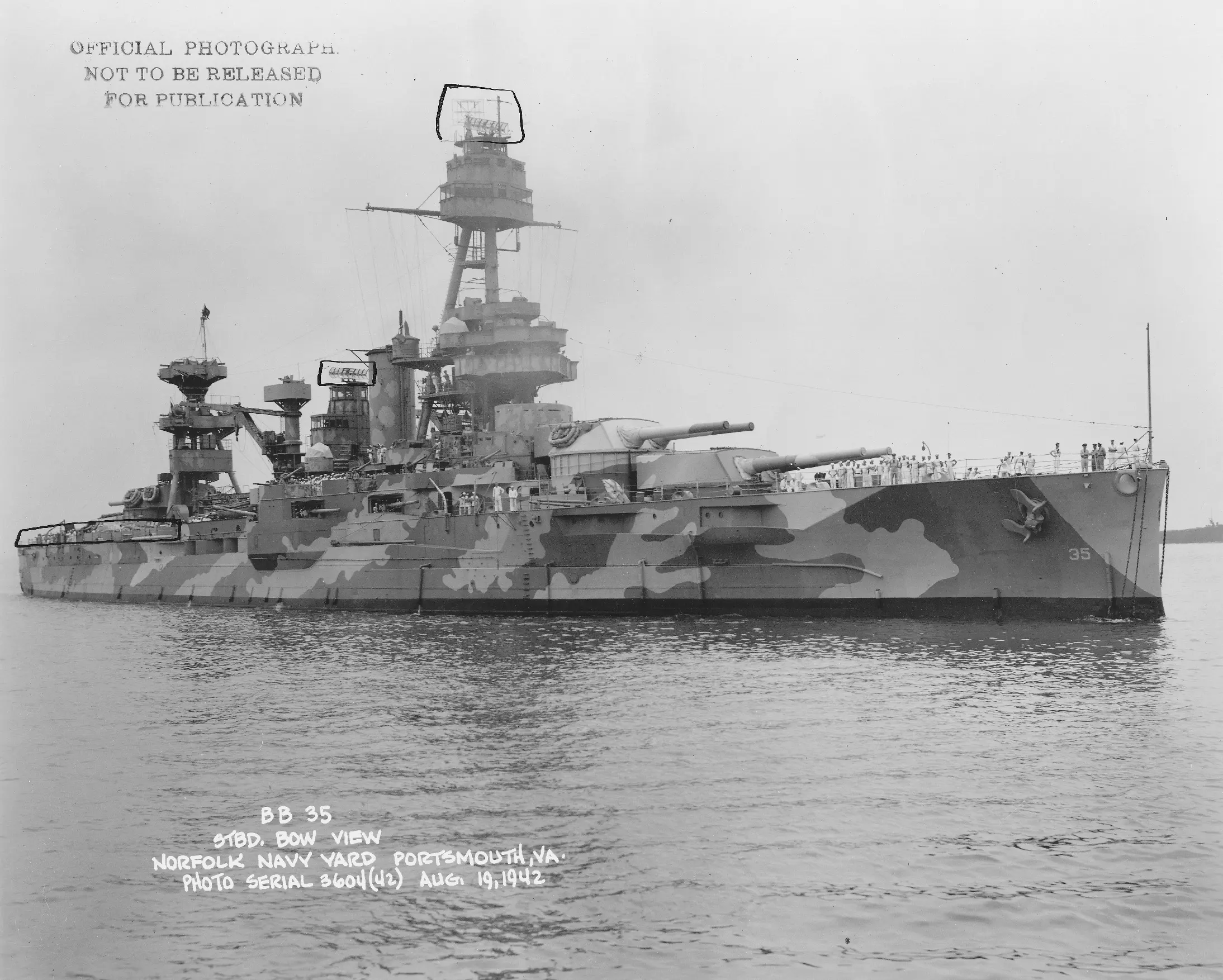
On November 7th, 1942, TF 34 neared the coast of French Morocco and split into four groups for the invasion. Under the command of Captain Roy Pfaff, Battleship Texas was the flagship for Rear Admiral Monroe Kelly and the Northern Attack Group. The Northern Attack Group steamed for the coast of Mehdia and Port Lyuatey. Their main objective was to secure the airfield north of Port Lyautey. TF 34 had brought with them seventy seven P-40s to operate out of the airfield, planning to use them to support attacks on Casablanca, 65 miles to the south. To take the airfield, the Army would need to secure the Kasbah at Mehdia, a 500 year old fortress that still stands to this day.
The Northern Attack Group had one ace up their sleeve though, a French harbor pilot named René Malevergne. Malevergne had worked as a pilot in Port Lyautey for over twenty years and had been smuggled out of Morocco by the Office of Strategic Services (the predecessor to the modern day CIA) just a month before the invasion. The plan was that Malevergne would pilot the destroyer USS Dallas up the Sebou River, past the Kasbah and other defenses, and to the airfield, where Dallas would unload a specially trained 75-man force to seize the airfield.

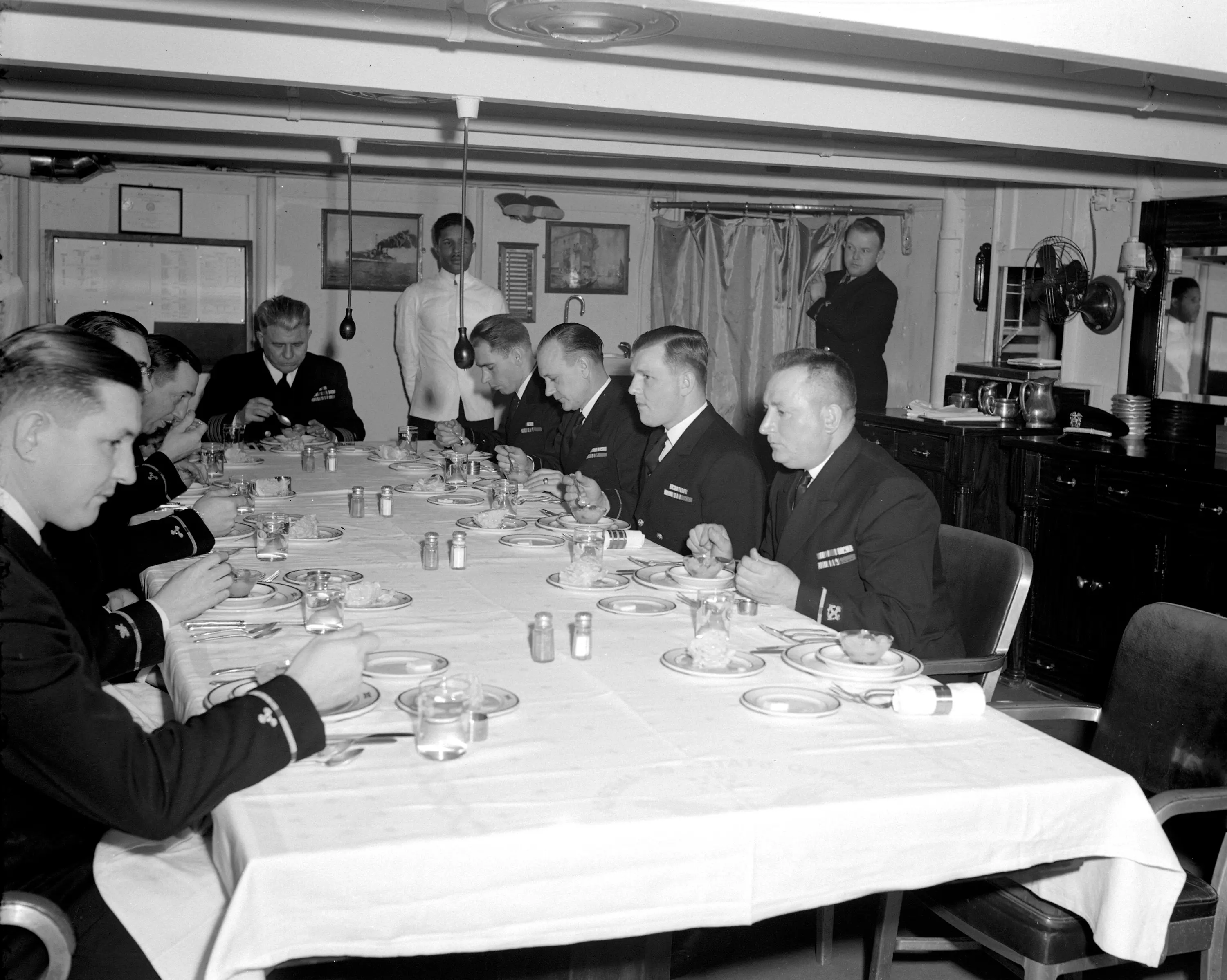
"Play Ball"
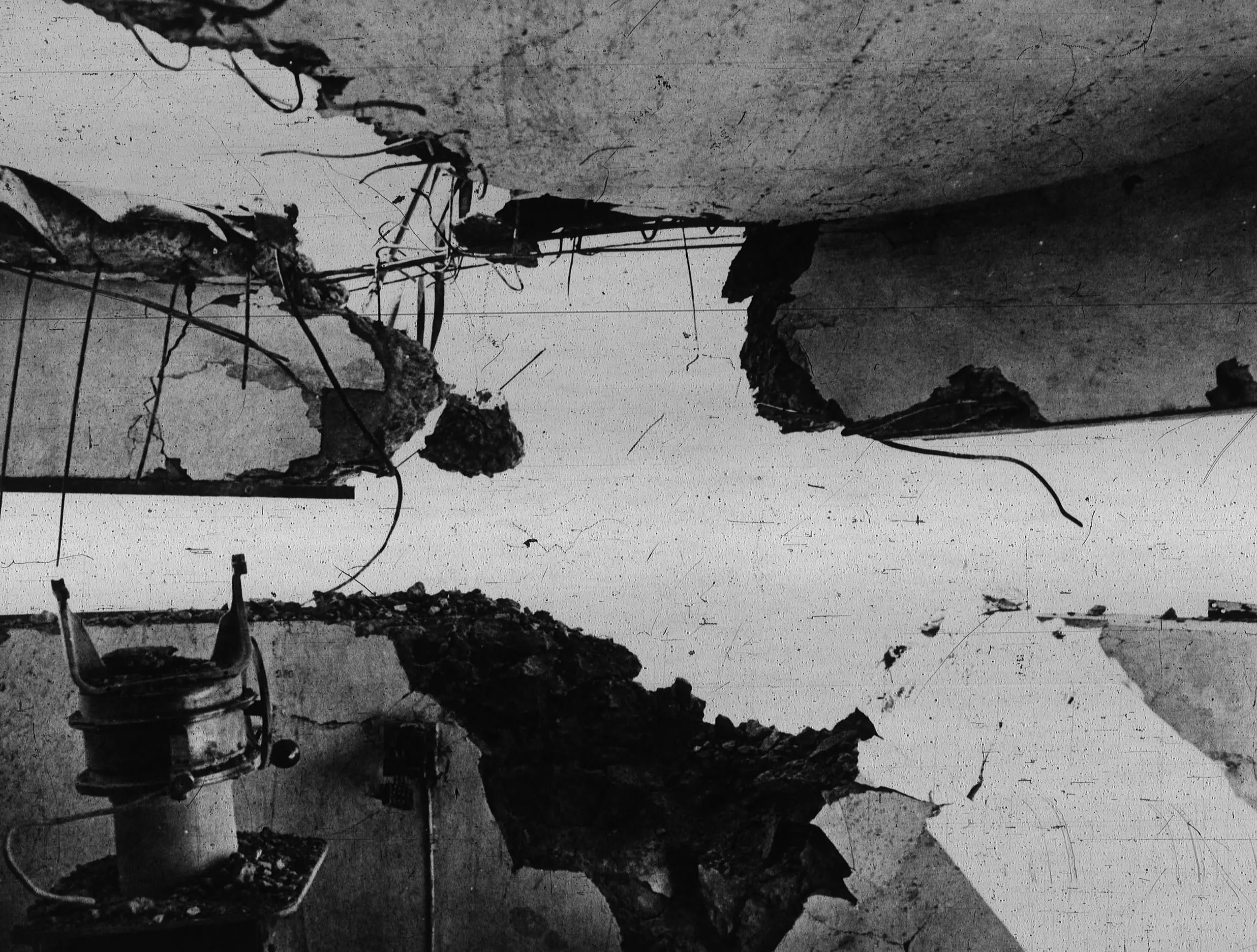

Battleship Texas and the Northern Attack Group reached their attack position at 2321 on November 7th and landing operations got underway at about 0500 the following morning. There were many unknowns that morning, but the highest hope was that the French forces would choose not to resist the landings. All American and British forces for Operation Torch were under orders not to fire unless fired upon. In Morocco, the Army and Navy used a simple code - if any unit was fired upon or encountered resistance, they would signal "Batter Up". If the commander for that area believed it was necessary for the whole force to take action, he would broadcast "Play Ball".
At about 0630, Battleship Texas began broadcasting a proclamation from General Eisenhower in French, urging the French forces not to resist. By this time, it was already too late. The landing craft and their support ships, such as USS Roe and USS Eberle, were already under fire. Similar situations unfolded at the other two landings for Task Force 34; before the end of the day, the order to "Play Ball" was given all across Morocco.

At 0622 on November 8th, Battleship Texas launched the first of her Vought OS2U Kingfisher seaplanes. The aviation detachment aboard Battleship Texas kept busy through the entire battle, with at least one plane in the air almost continuously from sunup to sundown every day. Their main jobs were to patrol for enemy submarines - something they had gotten very well practiced at on the long journey from Virginia - and to provide air spotting for the 14" guns.
During the battle, naval gunfire support was given only at the request of the Army. Later in the war this changed, with ships often being free to fire on "targets of opportunity" (often identified by Kingfishers flying above). At this time though, the Army and Navy had little experience in these kinds of operations and were more concerned with the possibility of friendly fire. Destroyers and cruisers were able to get much closer to shore and deliver more precise gunfire support and so were more commonly called on by the Army.
At 1343 her first call for gunfire came and Battleship Texas opened fire with her main battery on an ammunition dump between the Kasbah and the airfield. After 28 years of service, this was the first time Texas had ever fired her 14" guns in anger. Texas fired fifty-nine 14" shells, landing about a fifth of them in the target area according to the Kingfisher crew flying overhead.

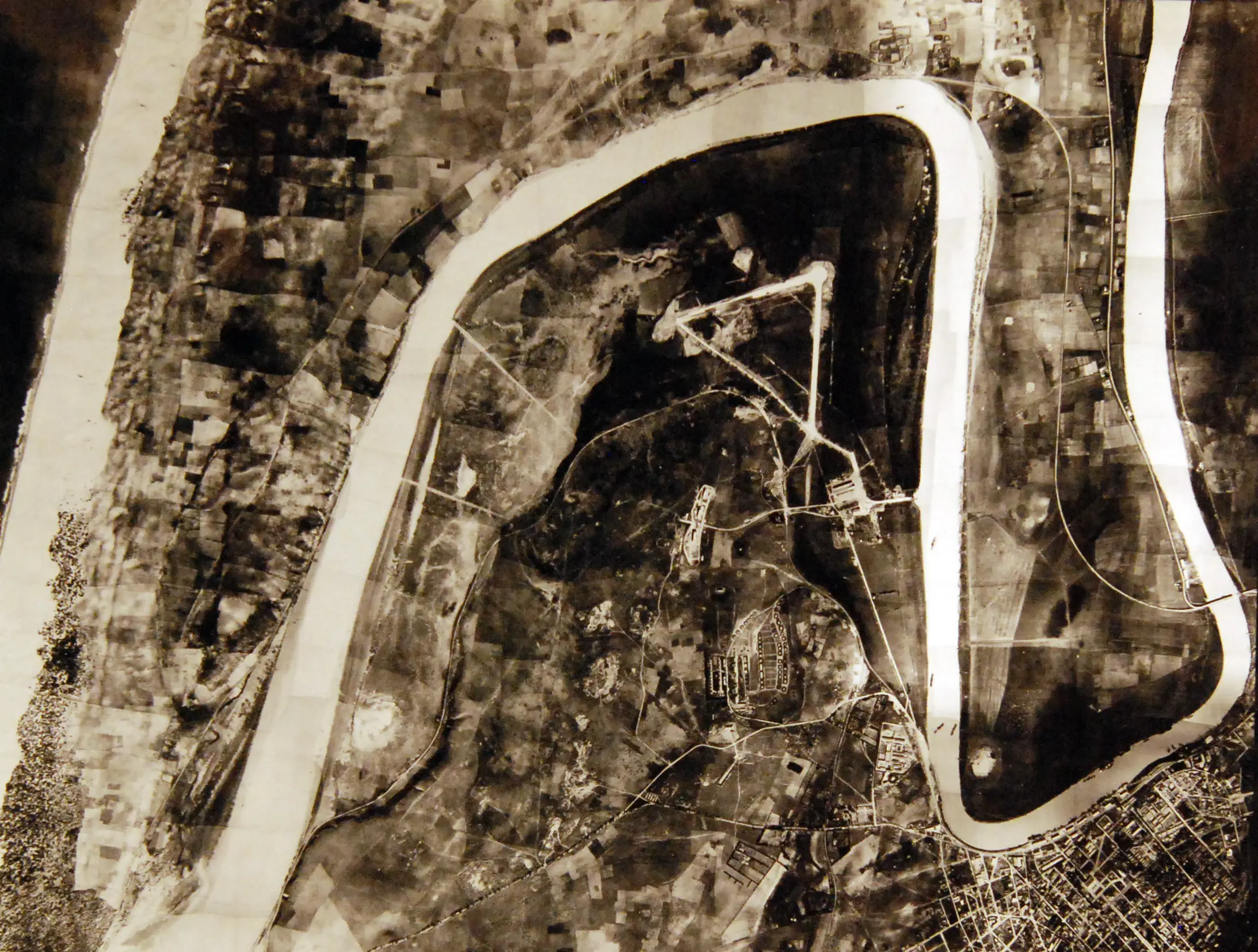
Best Laid Plans...
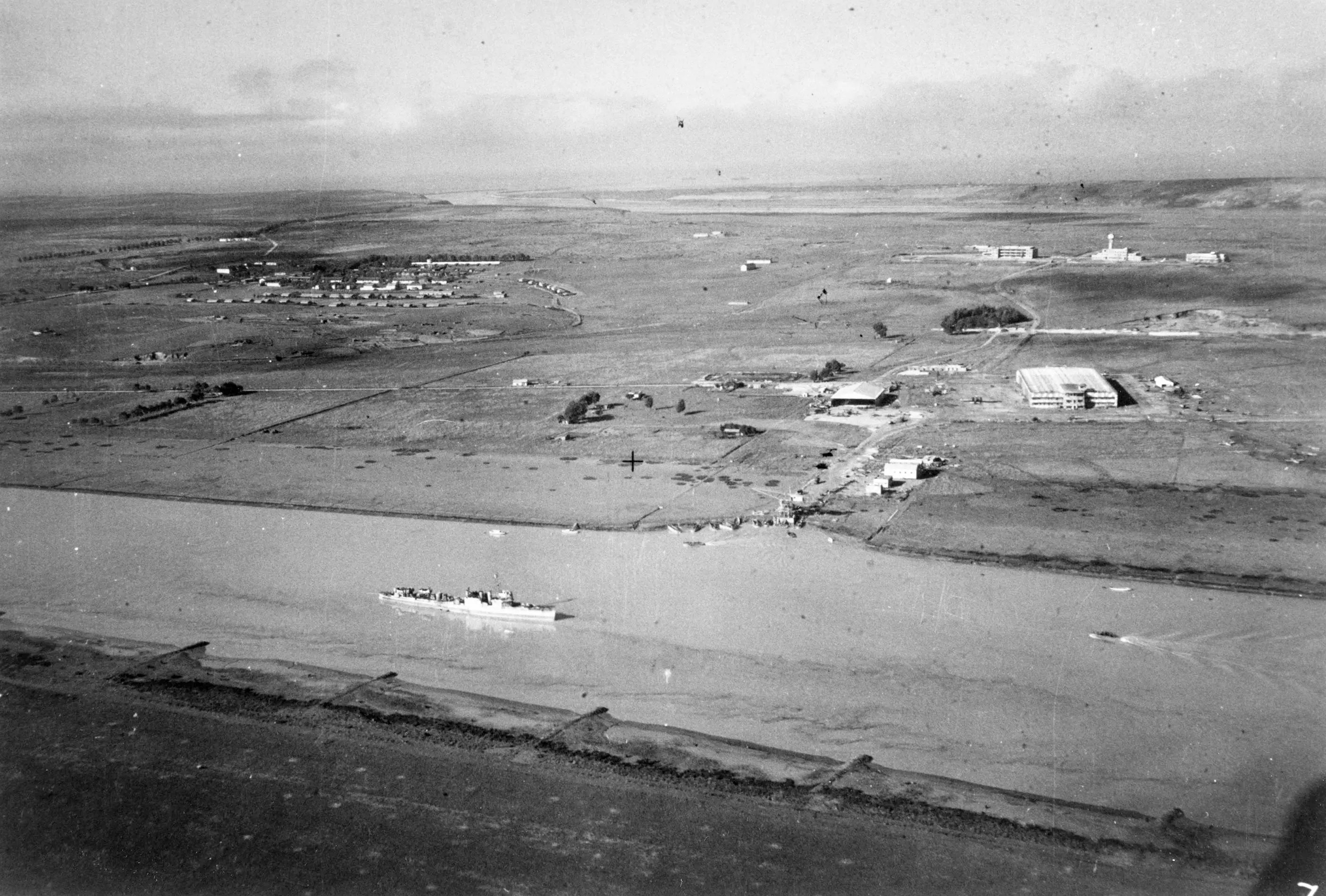
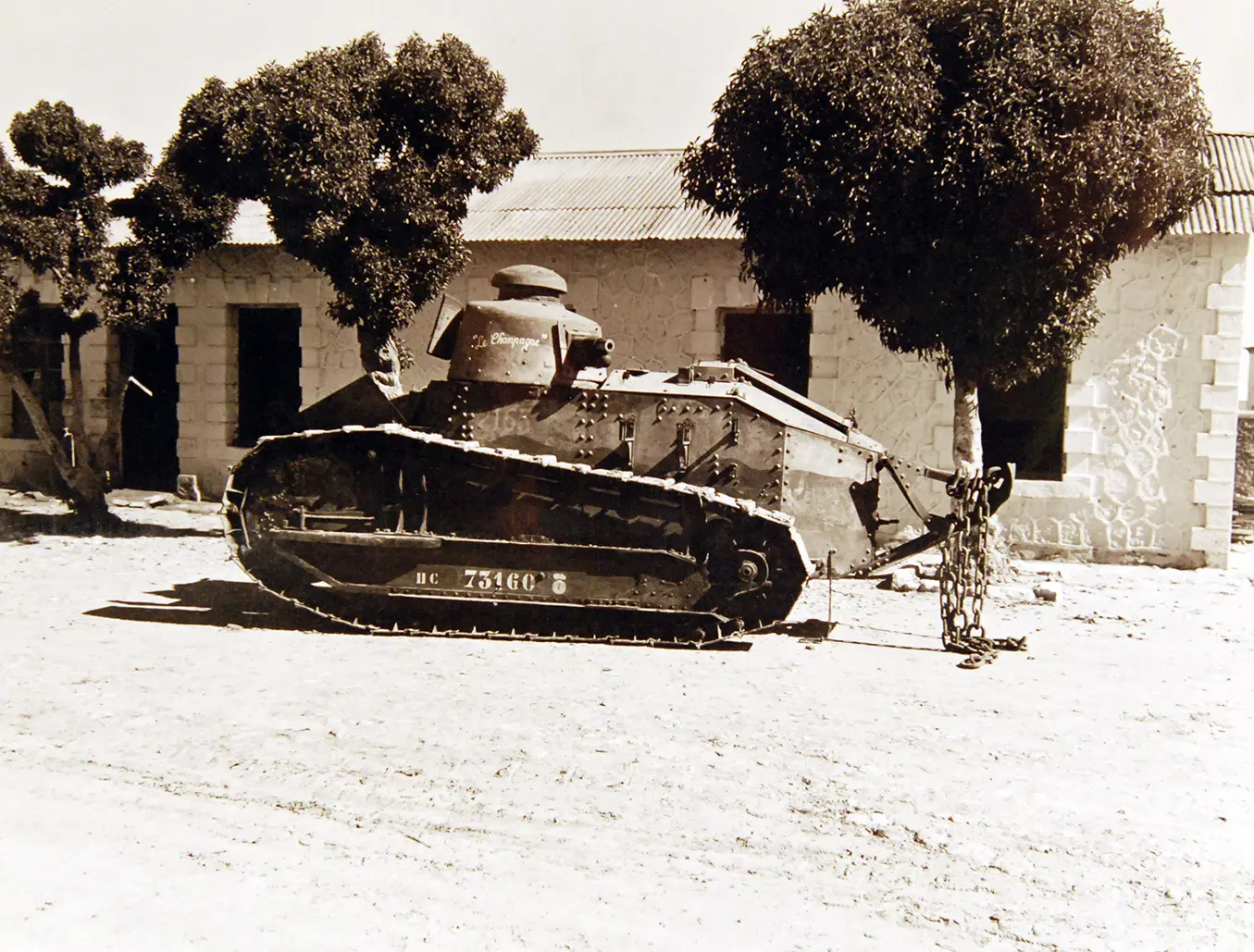
By the afternoon of November 8th, it became clear that a swift and easy victory would be out of reach. Some of the landings had missed their targets, setting them far behind. A net prevented René Malevergne and USS Dallas from entering the river to seize the airfield. And by the end of the day, the Army still had not secured the Kasbah.
But on November 10th, things were beginning to fall into place for Battleship Texas and the Northern Attack Group. A specialized naval demolition team had launched from USS George Clymer in the early morning of November 8th. Their task was to cut the net blocking the Sebou River, but they were turned away by enemy fire on their first attempt that morning. A second attempt was made on the night of the 9th and at about 0130 on the morning of the 10th, having worked through the night, the demolition team successfully cut the net. They escaped under heavy machine gun fire and took several injuries, but returned to the Clymer with all hands. With the way cleared, Malevergne took Dallas' helm and brought the ship up the Sebou River. Malevergne expertly guided Dallas around scuttled ships and other obstacles, while avoiding fire from a small battery of French 75 mm guns. By 0730 they launched the attack and at 1030 the airfield was captured and ready to receive the American P-40s.
French tanks from Rabat tried to spoil the American gains, but they were quickly turned away by overwhelming force. Aircraft from USS Sangamon intercepted the tanks south of Mehdia, aided by gunfire support from USS Savannah and two Kingfishers from Battleship Texas. One Kingfisher pilot, Lt(jg) Chesley, scored a direct hit with a depth charge (bomb normally used against submarines), completely destroying one tank and flipping over two others.

Sketch of Mehdia - Port Lyautey Area with Sebou River
This map shows most of the relevant areas and landmarks for the Northern Attack Group's operations. The military and civil airport north of Port Lyautey was the primary objective. The black shape labeled "MEHDIA" is the kasbah, a 500 year old fortress and the main obstacle in taking the airfield. The Northern Attack Group planned to mostly bypass this obstacle by bringing the destroyer USS Dallas up the river to deliver troops directly to the airfield, but Dallas would still have to get past the two 75 mm guns stationed just west of the Kasbah.
A major road also leads south to Rabat (30 miles) and eventually Casablanca (65 miles), while another leads east to Meknes (80 miles). Rabat was the capital of Morocco, while Casablanca was the largest and most developed port city in French Morocco. Meknes is one of the major cities in Morocco and formerly the capital. Meknes is also about 1,700 feet higher in elevation, making it a much more defensible location compared to Port Lyautey and Mehdia.
Citation:
Image provided by Naval History & Heritage Command.


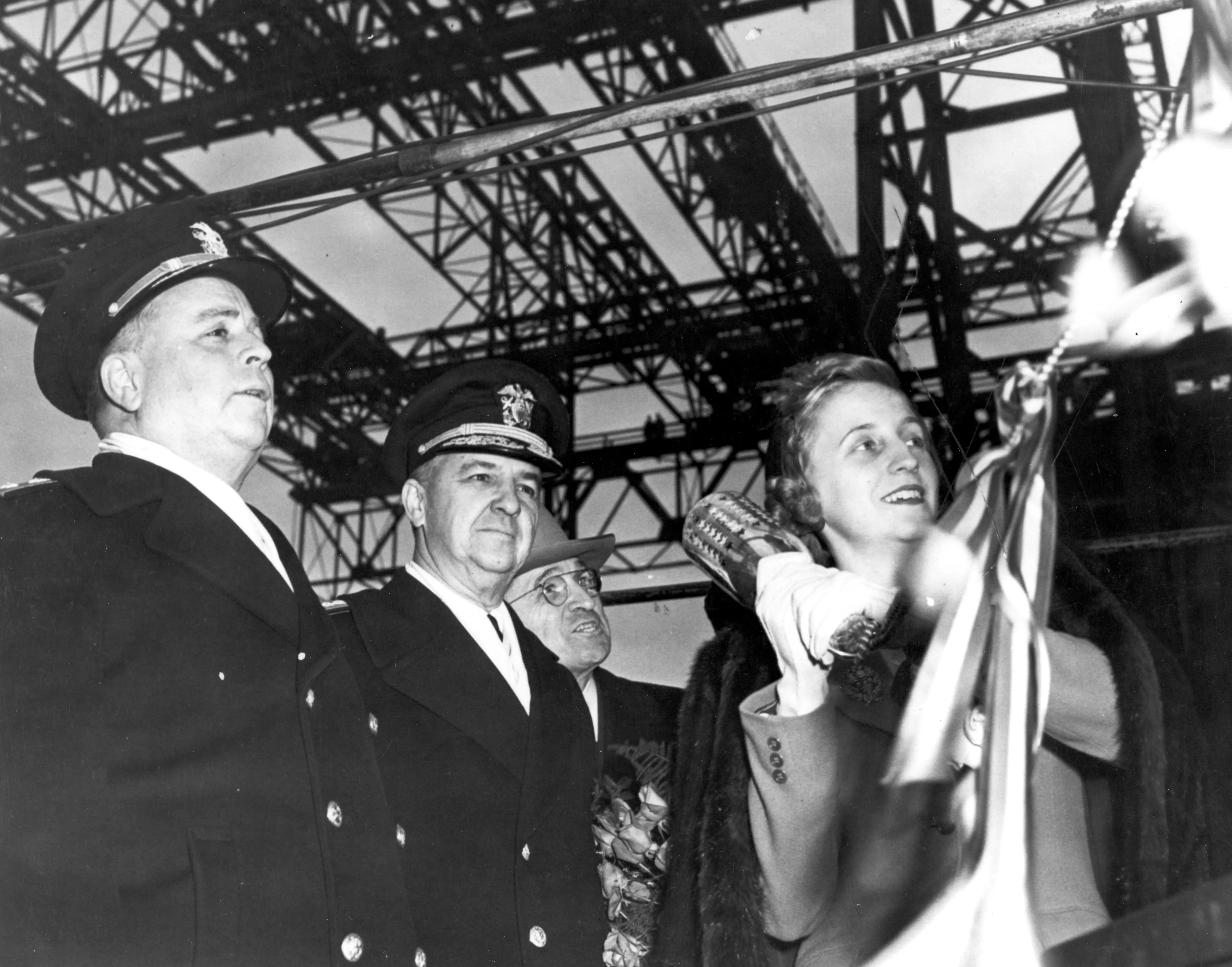
Sketch of Mehdia - Port Lyautey Area with Sebou River
This map shows most of the relevant areas and landmarks for the Northern Attack Group's operations. The military and civil airport north of Port Lyautey was the primary objective. The black shape labeled "MEHDIA" is the kasbah, a 500 year old fortress and the main obstacle in taking the airfield. The Northern Attack Group planned to mostly bypass this obstacle by bringing the destroyer USS Dallas up the river to deliver troops directly to the airfield, but Dallas would still have to get past the two 75 mm guns stationed just west of the Kasbah.
A major road also leads south to Rabat (30 miles) and eventually Casablanca (65 miles), while another leads east to Meknes (80 miles). Rabat was the capital of Morocco, while Casablanca was the largest and most developed port city in French Morocco. Meknes is one of the major cities in Morocco and formerly the capital. Meknes is also about 1,700 feet higher in elevation, making it a much more defensible location compared to Port Lyautey and Mehdia.
Citation:
Image provided by Naval History & Heritage Command.
Captain Roy Pfaff
Captain Roy Pfaff is sitting at the head of the table, dining with the Warrant Officers on Battleship Texas. Captain Pfaff was a last minute pick to command Battleship Texas - Captain Lewis Comstock was in command until September 28th, when he suffered a heart attack and had to be relieved. Comstock's replacement, Captain Lawrence Wild, arrived on October 3rd and was also relieved for medical reasons on October 14th. Captain Pfaff finally took command on October 17th, just six days before Texas and Task Force 34 were set to depart from Hampton Roads for North Africa.
On October 21st, a young Walter Cronkite got his first impressions of Captain Pfaff. He described Captain Pfaff in his journal entry as follows: "The Texas's new Captain is Roy Pfaff, formerly of the Yangtze Patrol, Caribbean Special Service squadron, and a dozen other interesting assignments. A partially gray-haired, shaggy-maned sea dog with a wealth of profanity and no sparsity of stories."
Citation:
Image provided by Texas Parks & Wildlife Department.
Rear Admiral Monroe Kelly
On the left is Rear Admiral Monroe Kelly, participating in the launching ceremonies for USS Missouri in 1944. Next to him is Rear Admiral Sherman Kennedy, (then) Senator Harry Truman of Missouri, and Truman's daughter Miss Margaret Truman, Missouri's sponsor. At that time Rear Admiral Kelly was the Commandant of the New York Navy Yard.
Walter Cronkite developed a good rapport with Admiral Kelly over their journey to Africa and back. In his book A Reporter's Life, Cronkite recalls Admiral Kelly asking for his help in briefing the crew on the impending operation. "Admiral Monroe Kelly had called me to his quarters. He noted that the men of the Texas, at least officially, had never been briefed on the ship's mission and now he was about to take care of that with a short speech over the public-address system. He allowed as how he would like to conclude his little talk with 'something heroic, something memorable, something like 'Your country expects every man to do his duty.' You're a writer, Mr. Cronkite, perhaps you could help me come up with something.' "
Citation:
Image provided by the National Archives & Records Administration.

14" Shell Hit from Battleship New York
Battleship New York, sister ship to Texas, was flagship of the Southern Attack Group during Operation Torch, leading the attack on Safi, French Morocco. This reinforced concrete tower took a glancing hit from one of New York's 14" shells and this was the result. The 1,400 lbs shell tore through the structure without exploding. Texas was using these same shells in her bombardment of Port Lyautey and Mehdia.
The Southern Attack Group's primary objective was to land the US Army's modern tanks and use them to advance north and attack Casablanca. Safi, a small port town about 130 miles south of Casablanca, was the nearest suitable location where tanks could be landed. At this time, there was no such thing as an LST (Landing Ship, Tank), so the geography required to land armor and other heavy vehicles was extremely restrictive.
Citation:
Image provided by the National Archives & Records Administration.


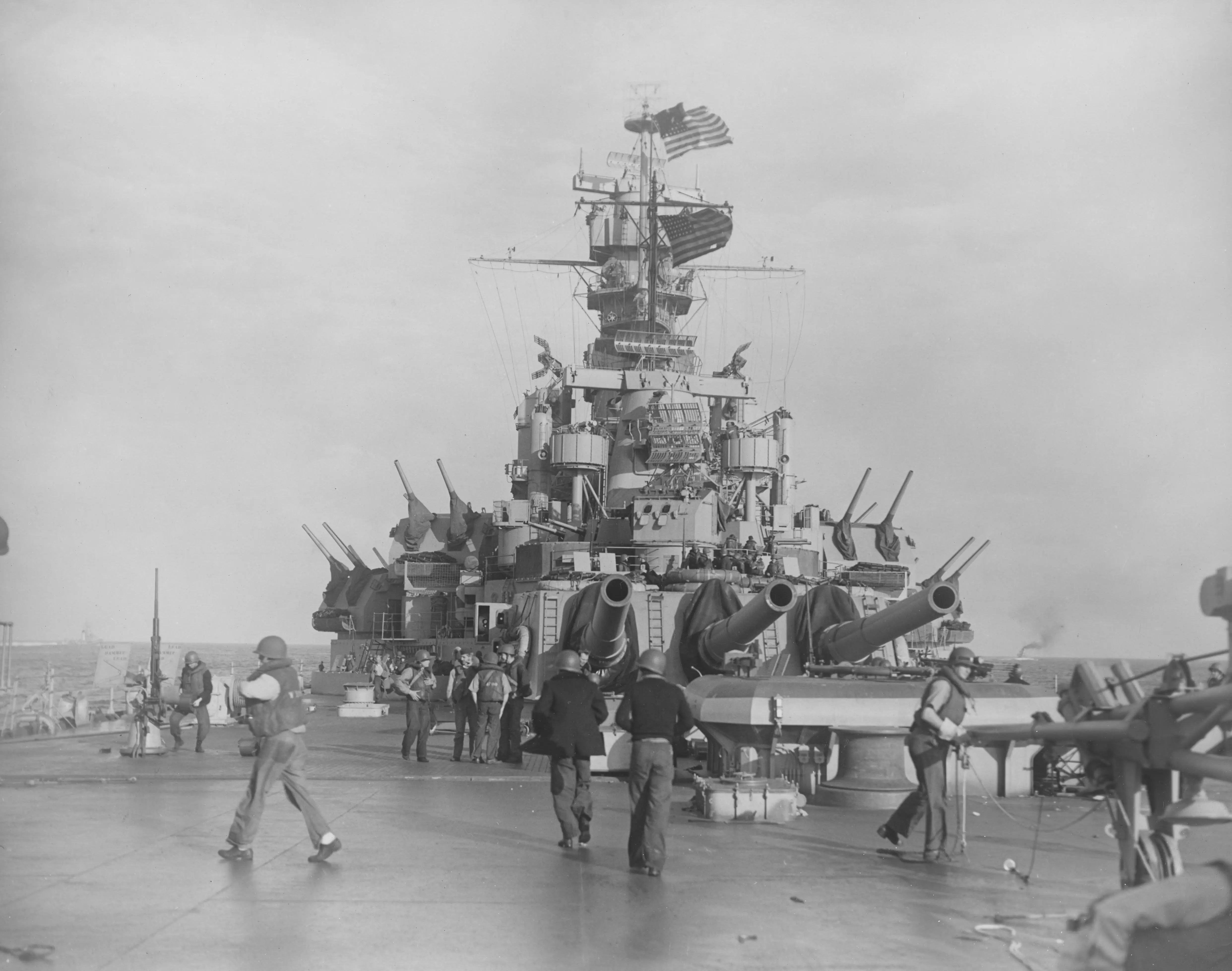
14" Shell Hit by USS New York
New York, sister ship to Texas, was the flagship of the Southern Attack Group during Operation Torch, leading the attack on Safi, French Morocco. This reinforced concrete tower took a glancing hit from one of New York's 14" shells and this was the result. The 1,400 lbs shell tore through the structure without exploding. Texas was using these same shells in her bombardment of Port Lyautey and Mehdia.
The Southern Attack Group's primary objective was to land the US Army's modern tanks and use them to advance north and attack Casablanca. Safi, a small port town about 130 miles south of Casablanca, was the nearest suitable location where modern tanks could be landed. At this time, there was no such thing as an LST (Landing Ship, Tank), so the geography required to land armor and other heavy vehicles was extremely restrictive.
Citation:
Image provided by the National Archives & Records Administration.
Near Misses Against USS Augusta
Augusta, flagship of Task Force 34 for Rear Admiral Henry K. Hewitt, led the Center Attack Group during Operation Torch. The Center Attack Group supported the Army landings at Fedala, a small town just 15 miles northeast of Casablanca. Their primary objective was to get the Army ashore and move south for an attack on Casablanca - Casablanca could not have been attacked directly because a substantial French fleet occupied the port.
Citation:
Image provided by the National Archives & Records Administration.
USS Massachusetts Off the Coast of Casablanca
USS Massachusetts was flagship for Rear Admiral Robert C. Giffen, commander of the Covering Group. The Covering Group's objective was to contain and, if necessary, sink the French fleet stationed at Casablanca. This fleet consisted of one cruiser, several destroyers, submarines, and the incomplete French battleship Jean Bart. If the French fleet was allowed to leave Casablanca, they could seriously disrupt landing operations, particularly in nearby Fedala.
On November 8th, the French fleet sortied from Casablanca and engaged Massachusetts and the Covering Group. Most of the French ships were sunk or beached by the Covering Group that day, with Massachusetts herself scoring hits on six warships, including Jean Bart.
Today Battleship Massachusetts is a museum ship, located at Battleship Cove in Fall River, Massachusetts.
Citation:
Image provided by Naval History & Heritage Command.




Kingfisher Preparing for Launch
An OS2U Kingfisher on the catapult on Battleship Texas, sometime in 1945. Naval aviation was developed through the 1910s and in 1919 Battleship Texas became the first American battleship to launch a plane. Over the interwar years, spotter planes became standard features of battleships for all major powers and a not-uncommon sight on cruisers and even some smaller ships.
Battleship Texas carried Kingfishers as her spotter aircraft through all of the Second World War, except for a brief period during the Normandy operations in 1944. They were launched with a catapult, mounted on turret #3 (the midship turret), which used a small powder charge to give the plane enough of a boost to launch without a runway. Kingfishers were equipped with floats to allow them to carefully land on the water so that they could be picked up with the ship's crane and placed back on the catapult. Texas normally carried three Kingfishers at a time and the cranes would be used to shuffle them on and off the catapult to launch them.
Aircraft on battleships had three major jobs. The first job is to spot the "fall of shot" - to see where a shell lands and report back a hit or miss and what aim adjustments need to be made to hit the target on the next try. The second and related job is reconnaissance - looking for targets of opportunity, incoming threats, troop movements onshore, or any other useful information. The third job is anti-submarine patrol. Aircraft could be equipped with depth charges to drop on suspected submarines. There were many circumstances where a battleship would be a tempting target for a lucky submarine, and so keeping planes in the air (such as Kingfishers) could greatly reduce the risk of being torpedoed.
Citation:
Image provided by Texas Parks & Wildlife Department.
Aerial View of Port Lyautey Area
This photo was taken shortly after the battle on November 23rd. The area circled in red is the ammunition dump that Battleship Texas fired on November 8th, 1942. Because ammunition is inherently dangerous to store, it was common to have an area or "dump" to store large quantities of ammunition away from the front lines and away from other important areas. This minimizes the risk of a detonation and protects men, fortifications, and other supplies if there is a detonation.
Citation:
Image provided by the National Archives & Records Administration.
Kingfisher Recovery
Kingfishers and other seaplanes are capable of landing in (and taking off from) the water so that they can be recovered by their ships. This procedure requires coordination between the pilot and the ship. There are a few different ways to do it, but most seaplane recoveries rely on using the ship's wake to smooth out an area of water for the plane to land in. Once the plane is landed, it can travel across the water with its propeller. The ship drops a "sled" into the water, which is something like a net for the plane to hook onto. Finally, the ship lowers a crane hook and the Kingfisher crew climbs out to hook the plane onto the crane. This picture shows a Kingfisher being recovered from a training flight off an unidentified ship between 1943 and 1945.
Citation:
Image provided by the National Archives & Records Administration.

USS Dallas in the Sebou River
USS Dallas after she reached the airport on November 10th, 1942. The airport is small but provided a large enough runway for the American P-40s to operate from, as well as other critical facilities.
Citation:
Image provided by the National Archives & Records Administration.


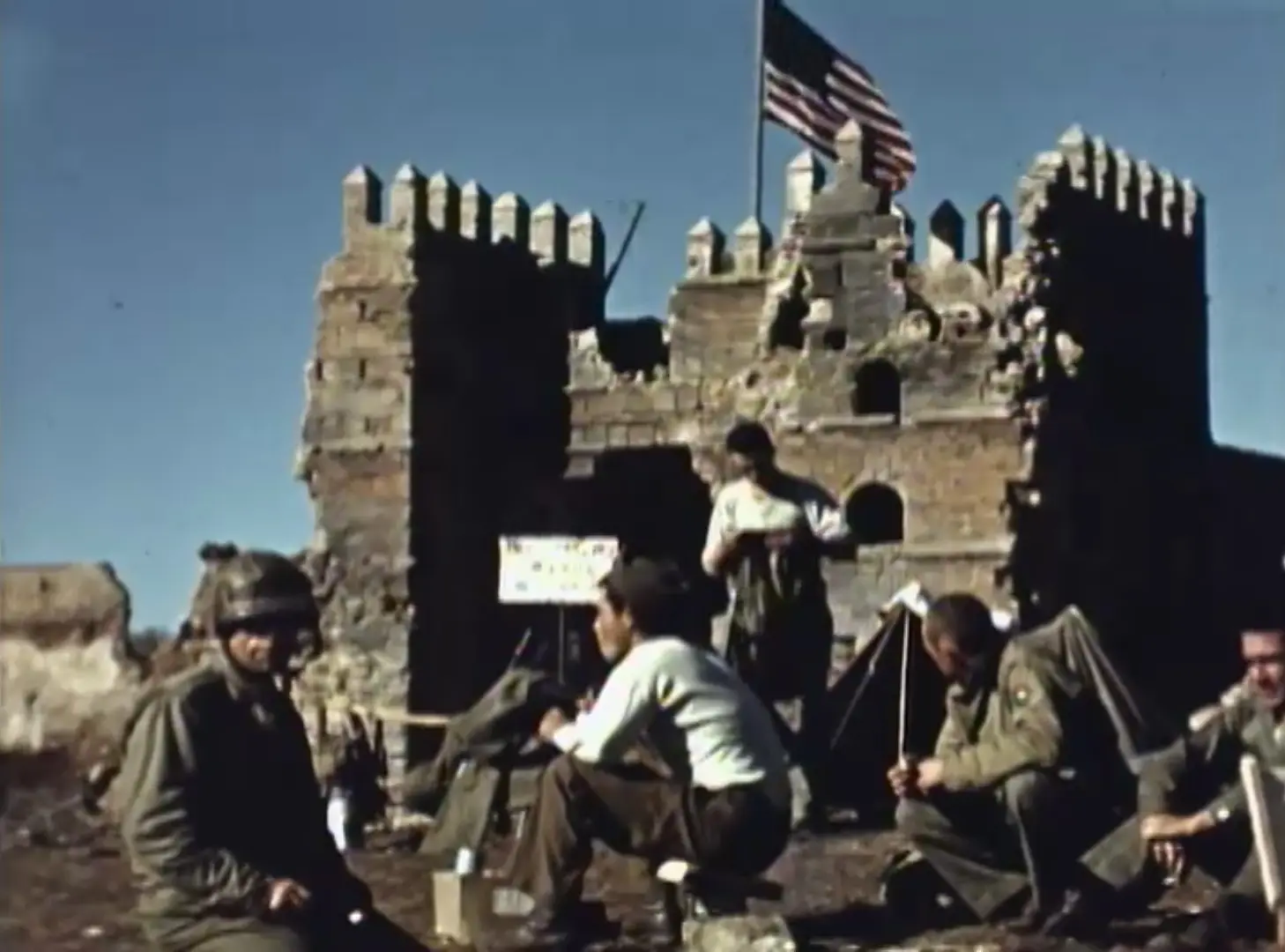
USS Dallas in the Sebou River
USS Dallas after she reached the airport on November 10th, 1942. The airport is small but provided a large enough runway for the American P-40s to take off and land, as well as other critical facilities.
Citation:
Image provided by the National Archives & Records Administration.
Captured French Renault Tank
This French Renault was captured after Operation Torch. The Renault tanks were developed during the First World War and were impressive vehicles for their time. By the Second World War they were still in use but outmatched by modern tanks and other weapons.
Citation:
Image provided by the National Archives & Records Administration.
Kasbah at Mehdia
A single frame from an original color film shot shortly after Operation Torch. American soldiers rest outside one of the kasbah's gatehouses. The Army captured the Kasbah on November 10th, after the airport was taken.
Citation:
Image provided by the National Archives & Records Administration.

Battleship Texas as She Appeared During Operation Torch
This photo was taken after work done on the ship at Norfolk Navy Yard, with boxes highlighting modifications made. Texas received new radar systems, additional 20 mm and 1.1" anti-aircraft guns, and the Measure 12(M) paint scheme. With these upgrades, Texas now had the ability to detect aircraft up to 75 miles away and an anti-aircraft battery with long range (3"/50 caliber), medium range (1.1"), and short range (20 mm) guns.
Citation:
Image provided by the National Archives & Records Administration.

US Army Landing in Algiers
This is a typical view of a US Army landing during Operation Torch. At all of the landing sites, American flags were displayed prominently, and soldiers wore distinctive American flag armbands, hoping to play off the positive French views of the Americans and downplay the involvement of British forces. Some British ships even flew the American flag during the invasion.
Citation:
Image provided by the National Archives & Records Administration.